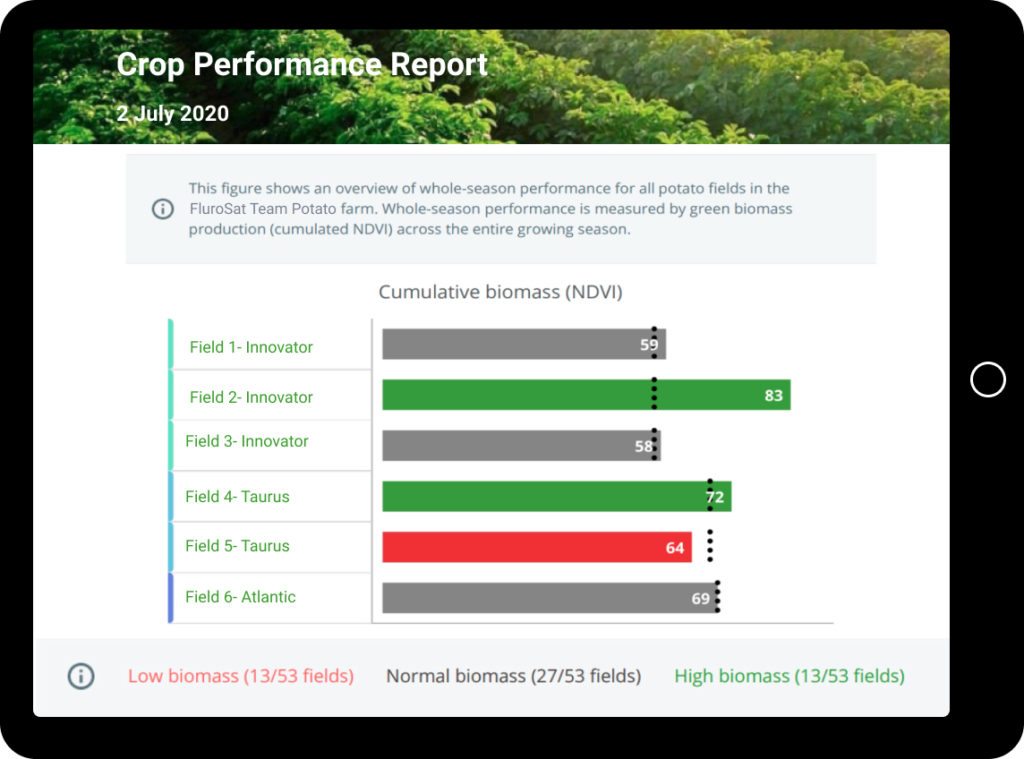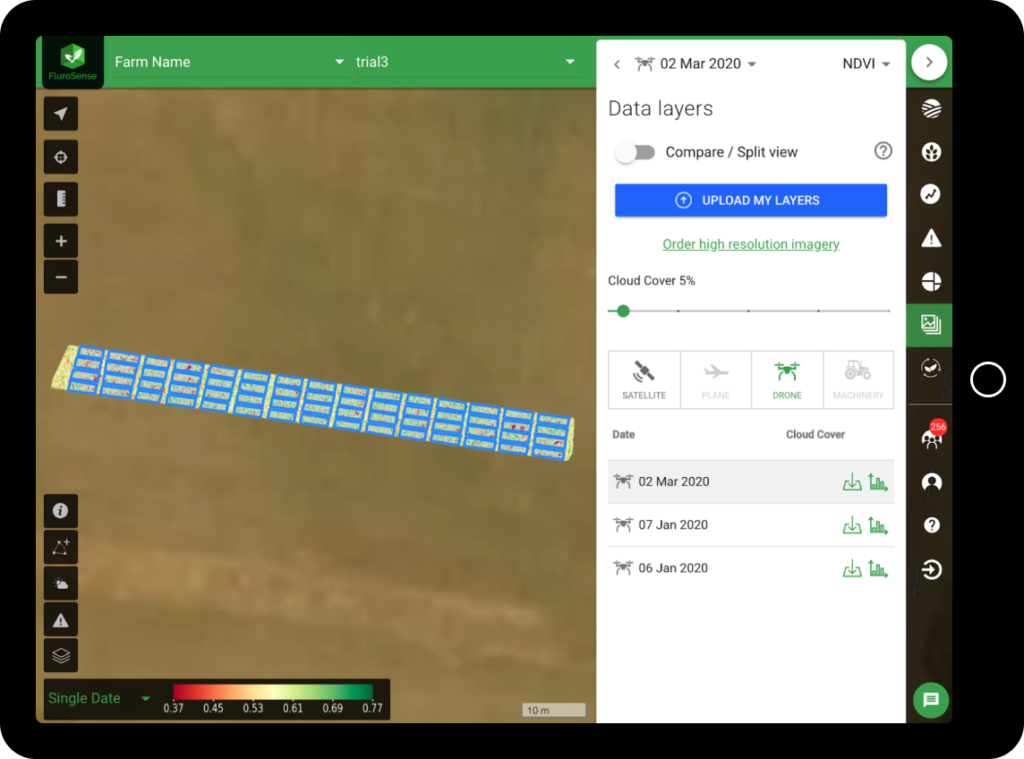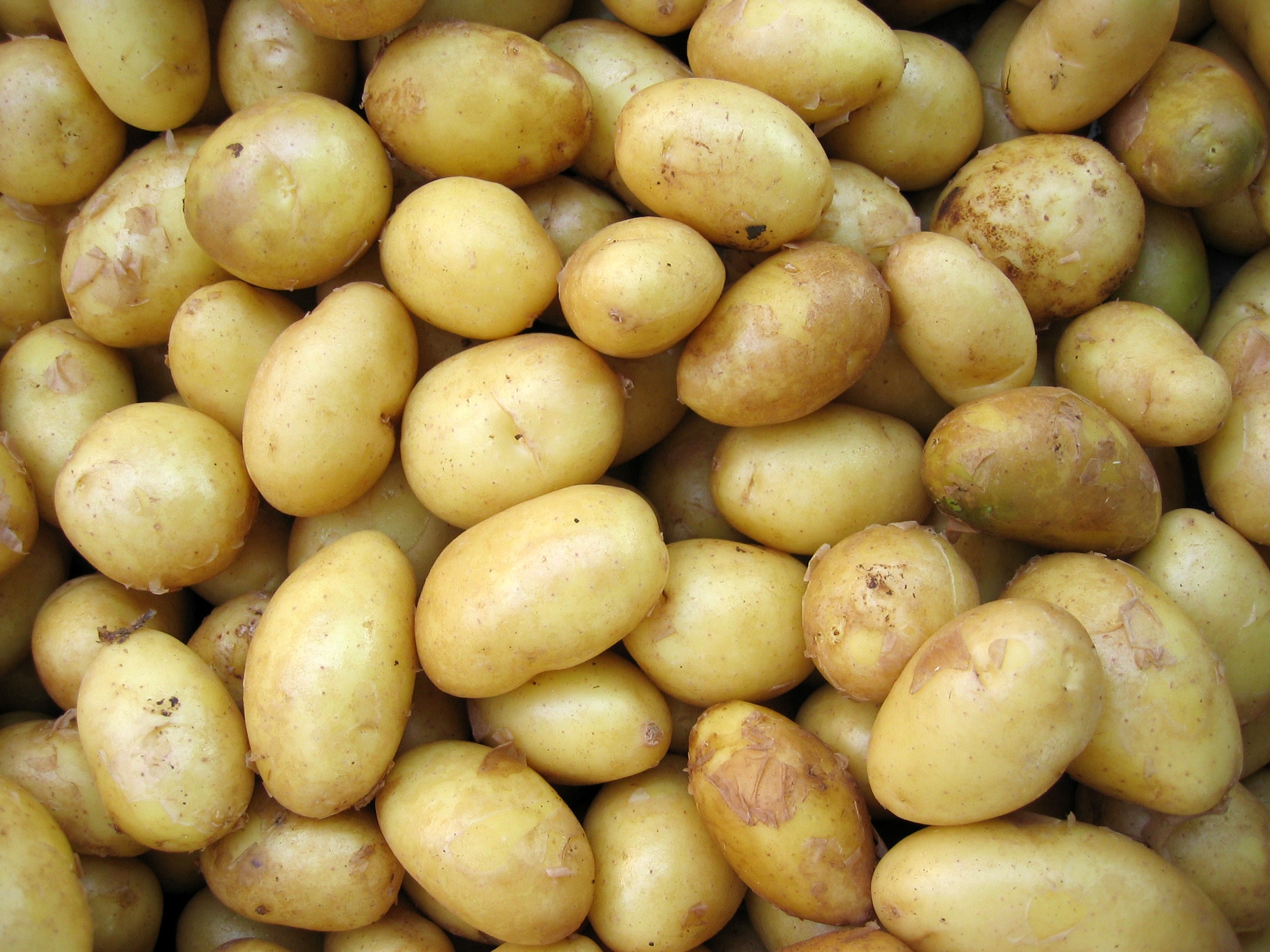It’s no secret to any food processor that there are many working parts to deliver a quality product. One broken cog in the wheel can have a domino effect. And with an evolving consumer base that wants increased transparency into where their food comes from, food processors are at the forefront of adopting innovative ways to increase field-level visibility.
The FluroSense Insights engine is designed to deliver proactive insights and make sure there are no surprises. As one food processor put it, “Not knowing is more of an issue than the problem itself.” FluroSense Insights enables field-level visibility and helps processors optimize workflows to deliver a superior quality product.
The FluroSat team recently sat down with one of our food processor customers - well virtually that is - and mapped out potato production from pre-season planning to post-harvest analysis. The outcome of this meeting was a timeline of how precision ag data coupled with remote sensing information and crop modeling can deliver greater visibility and data-based decisions for food processors throughout the production process.
Here is how FluroSense Insights fits into a potato processor’s workflow in-season and beyond.

Early Season
For food processors, the beginning of the season is all about visibility. A bird’s eye view of farms and fields in production is critical for tracking growth throughout the season. Assessing emergence is also the first piece of data to inform which fields may be ready for harvest first, enabling processors to get a jump start on harvest planning before all of the crop has even emerged from the ground!
The more knowledge we can get and the earlier the better. With FluroSense Crop Performance information we can flag certain fields from the beginning that we can file away for the end of the season.
-Potato processor
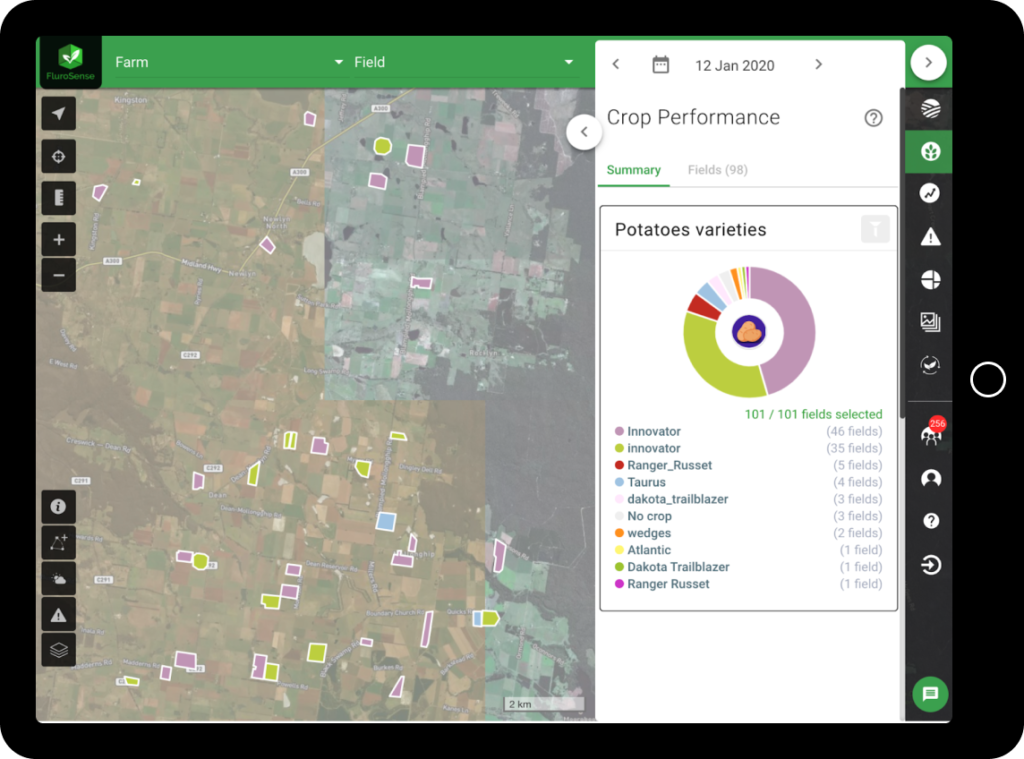
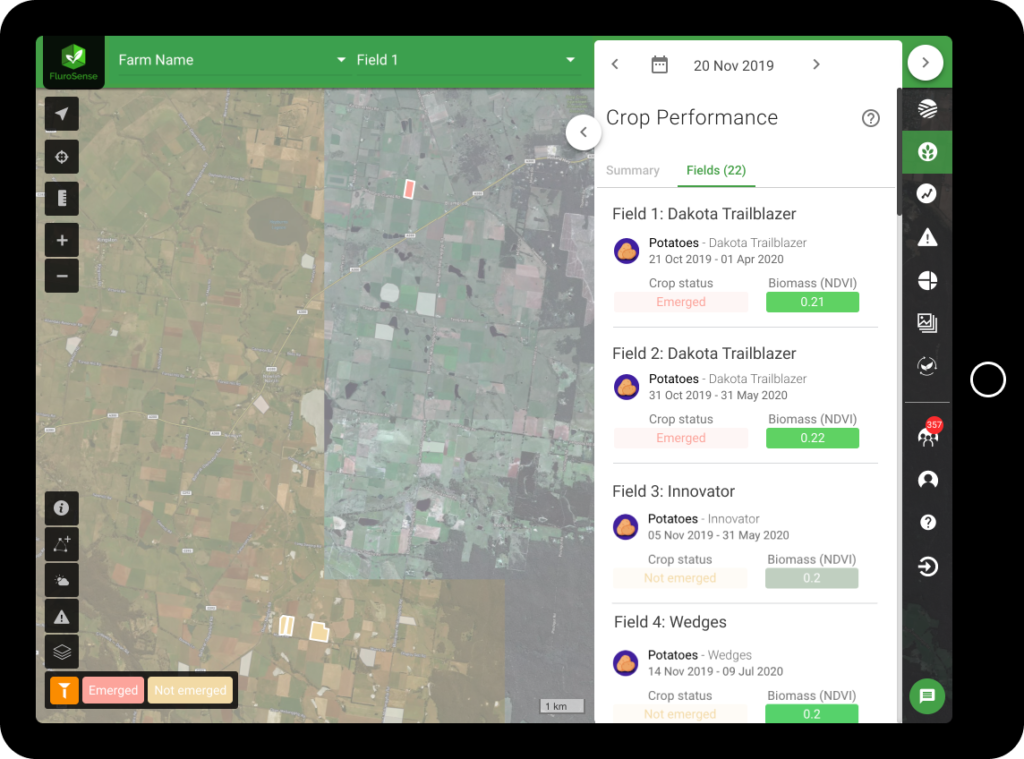
Mid Season
As the crop continues to develop the processor’s mind shifts to focus on in-season production decisions: What fields have stressed areas? Where in a field we need to scout?. Having insights that proactively pinpoint areas of stress can inform where to scout and influence important management decisions. For Example, decisions like turning on irrigation early because of dry weather can help reduce the likelihood of scab, a common potato fungal disease. Or when the opposite problem of too much rain occurs, crop stress areas caused by ponding will be identified. In season sampling is also an important activity that is carried out to be able to monitor how the season is tracking. Using suggested sampling points enables representative samples to be used to extrapolate out and report on the progress of a wider production area.
This tool helps us sample by looking at the satellite imagery and select representative paddocks that I know will be ground truth and give us an overview of everything.
- Potato processor
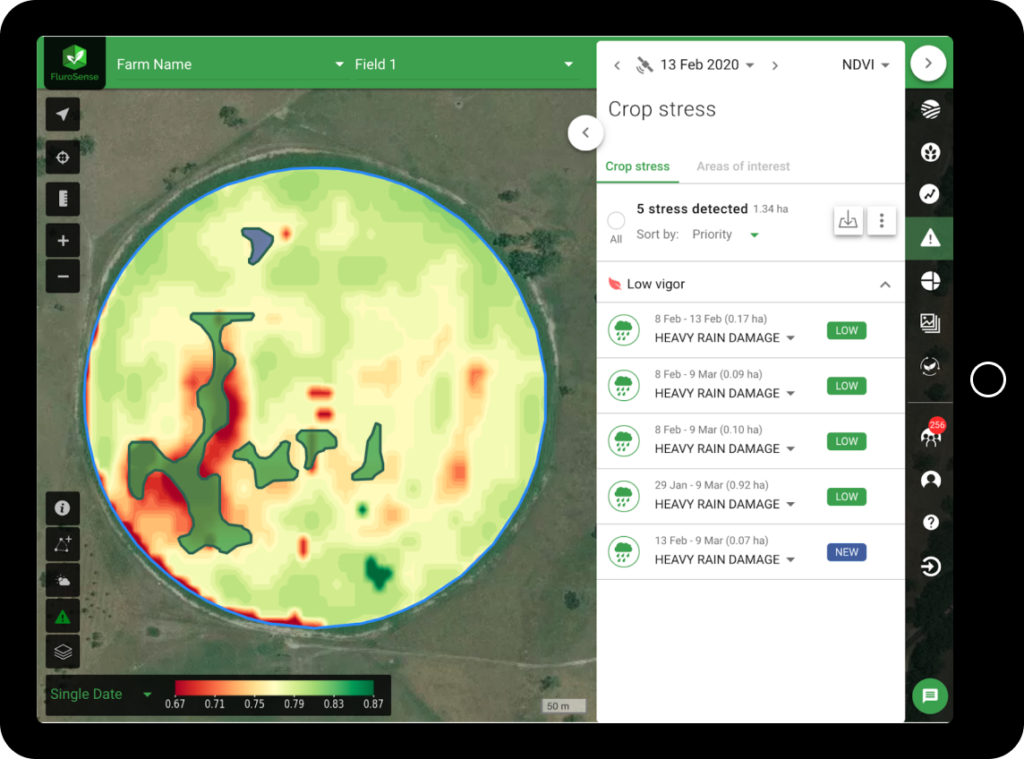
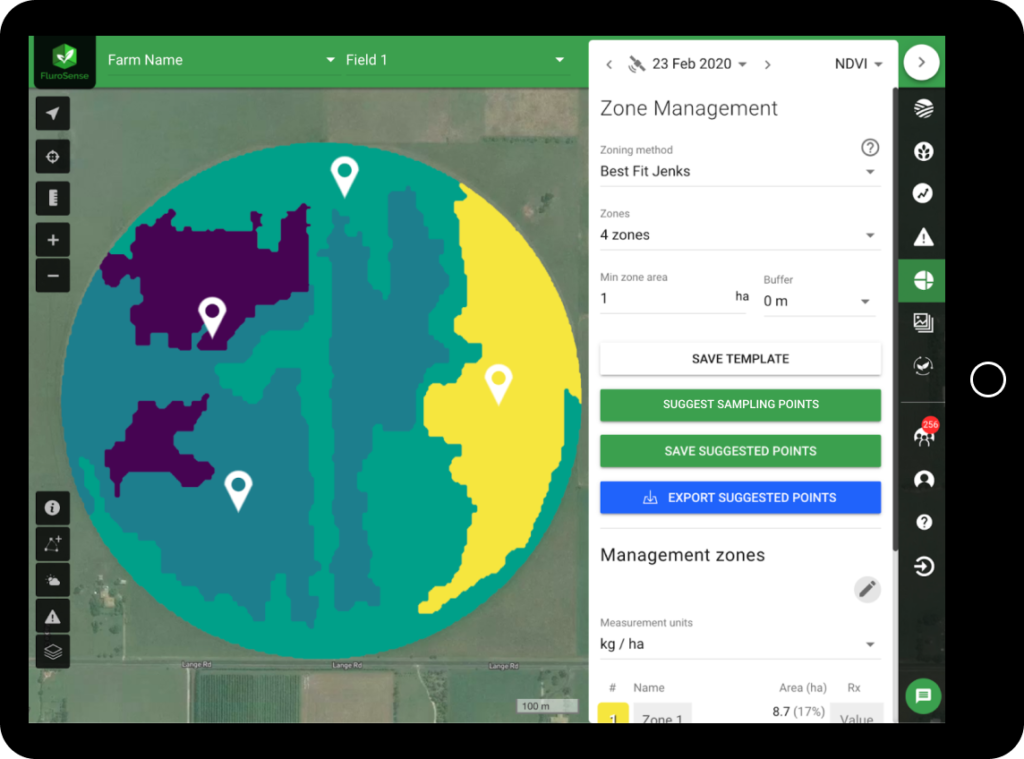
Late Season
The end of the season is all boots on the ground preparing for harvest. Processors’ minds are on optimizing harvest processes and making sure that all of the value from the season is captured. FluroSense Crop Status and Crop Growth attributes are used to assess which fields will be ready to harvest first so processors can plan where to send the trucks. Capturing fields that will be ready first means making sure harvest corresponds with factory timing. Additionally, Crop Performance information such as a field’s biomass can help processors allocate harvest lots to the factory or storage.
With the senescing crop status filter, we can track if early crops are going to be ready when we are opening the factory. It is important to know when crops are ready because we have set dates that the factory is starting. If we know early, we can plan for it.
-Potato processor
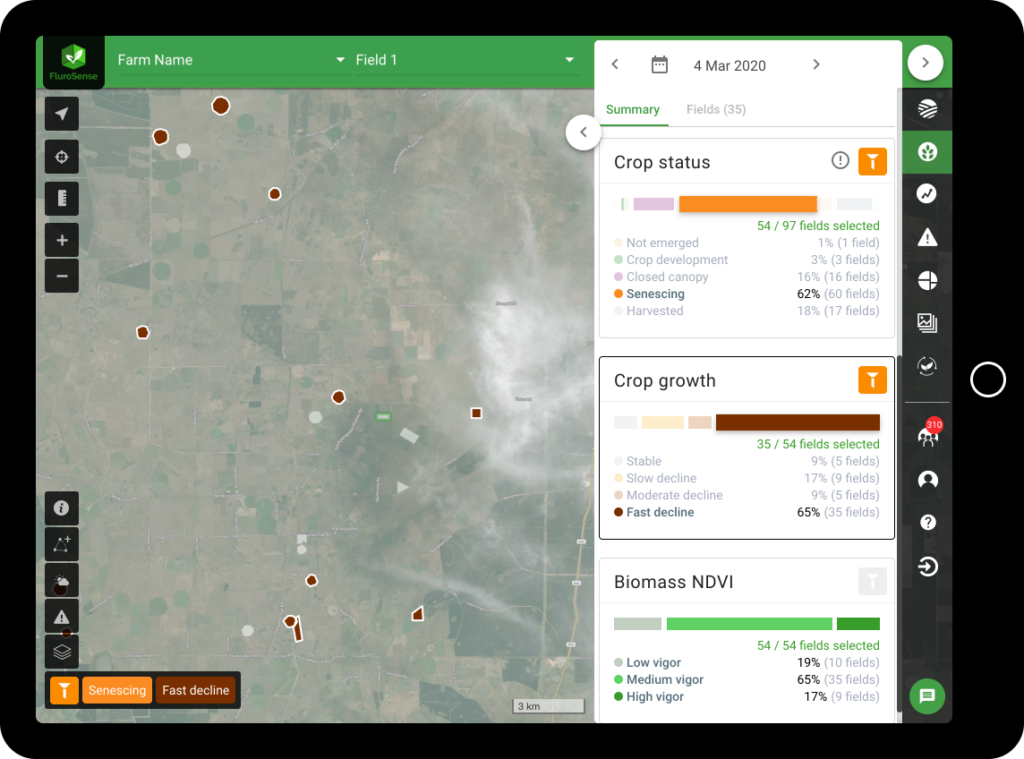
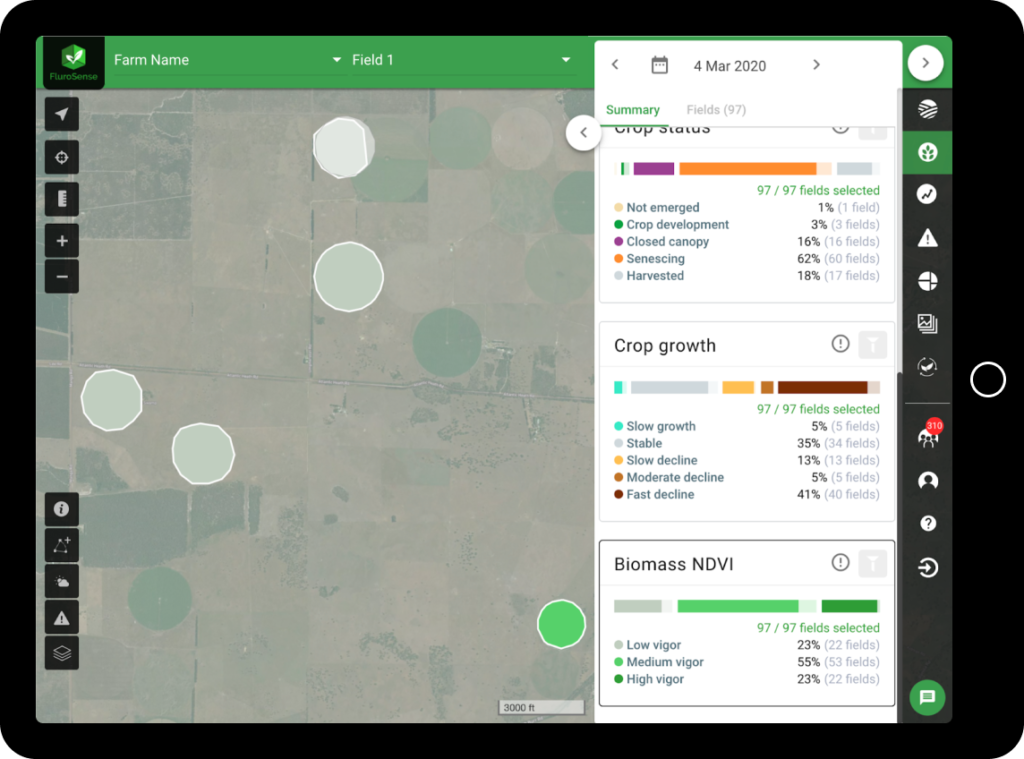
Post Season
Even though the potatoes are out of the ground, the season isn’t over for processors. Post season is the time for looking back, benchmarking varieties, and planning for continuous improvement. The FluroSense End of Season Report enables processors to strengthen grower relationships through having a data-informed discussion on their farms and fields. Now is also the time when processors are looking back at trials. Best practices for subsequent growing seasons can be informed by trials on new varieties, row spacing, and management practices.
The grower saw that the End of Season Report was helpful to visualize low performing areas of the field to gain insights on particular solutions. With one grower it helped identify an irrigation issue. Without the imagery, it wasn’t as noticeable but now they are getting the pivot looked at for the coming season.
- Potato processor
